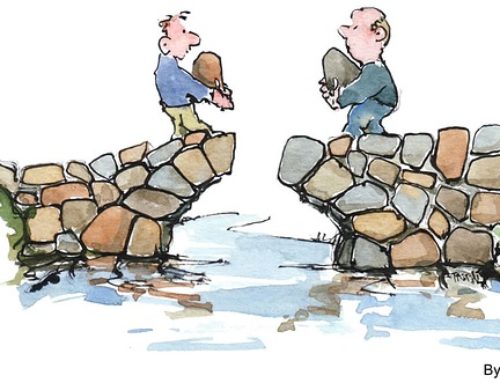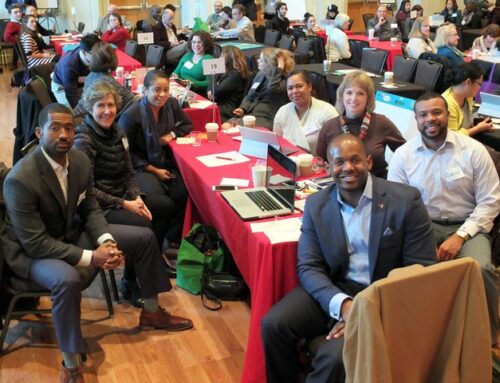by Barbara Trautlein, Ph.D.
You’ve heard of “IQ” – raw “intellectual” intelligence. You’ve heard of “EQ” – emotional intelligence. Yet, what about “CQ” – change intelligence? Change is the only constant. Reorganizations, mergers, acquisitions, downsizing, job transitions – the modern workplace is replete with never-ending, dizzying changes.
Yet, so many changes fail to achieve their lofty goals. According to various estimates, as many as 70% or more of change efforts fall short of expectations. With so much experience with change, what have we learned?
We know that to boost EQ we need to bolster skill in self-awareness, self-management, social awareness, and relationship management – to know oneself and to play well with others. What are the critical aspects of CQ – and what’s your Change Quotient® – to catalyze positive, powerful change?
Based on decades of partnering with clients to lead organizational, team, and personal transformations, years of conducting global research on managing change, and deep study into the theory of change, we are now launching our innovative, proprietary CQ System for developing Change Intelligence.
As a leader…
- Is your organization struggling in the current economy, forced to make tough business decisions that are unwanted, undeserved, or involuntary?
- Are you tired of the “Program of the Year” and want to know how to make change stick?
- Are you frustrated in your inability to overcome resistance to new ways of working
If so, your in the right place.
What is CQ (Change Intelligence)?
CQ (Change Intelligence) is the awareness of one’s own Change Leader Style, and the ability to adapt one’s style to be optimally effective in leading change across a variety of people and situations.
The Heart, Head, and Hands of CQ – Your Heartset, Mindset and Skillset as a Change Leader
We each have our own unique Change Leadership Style. Our style is comprised of our tendencies to lead with our Heart versus our Head versus our Hands. Powerful Change Leaders “start with the heart,” “engage the brain,” and “help the hands” move in positive new directions.

Some Change Leaders have a dominant tendency, and others focus equally on two or even all three components. The most powerful Change Leaders have all three tools in their tool-bag, skill in using the tools, and the savvy to deploy the right tools in the right situation. That’s CQ! By building Change Intelligence, Change Leaders are able to overcome what looks like resistance, but is really either confusion over the goal (no “Head”!), lack of connection to the goal (no “Heart”!), or lack of tactics and training to partner together to work toward the goal (no “Hands”!).
CQ in Action
To paint a picture of what CQ is and why it’s vital, here is the “Tale of Three Change Leaders.” The names have been changed, but other than that, the stories are all true. See if you can see yourself or others you know in the examples.
First, meet Glen. Glen was a manufacturing executive well-respected for his turn-around abilities. He was the CEO of a plant that had just been acquired by a new company. The plant had been shut down for two years, and a few hundred of the original several thousand person workforce was brought back to restart the facility.
Glen was a visionary – he was inspirational in communicating the future goals and big picture business objectives. However, while he was really smart, he left his people behind. While he saw clearly in his own mind how to get from here to there, from decrepit and aged to high tech and competitive, his people were confused. And isn’t that what often happens – what seems like resistance is really confusion. His people thirsted for guidance, because they did not want to be unemployed for two years again, and the plant was the only game in town. And that was the other thing Glen was blind too – the emotional needs of his people. There was so much fear. People had lost their jobs, they desperately did not want to again. Yet, when Glen barked orders wanting to know why things weren’t happening fast enough, people would shut down, afraid to tell the emperor he had no clothes – that he never gave them the plan or training to empower them to bring the vision to life.
That’s what our coaching centered around. Glen was “stuck in his head,” and needed to augment the head with the heart and hands – working through people’s fears, and giving them the skills to partner on the journey.
Second, meet James – who conversely was “high heart.” James was the Chief Medical Officer of a large healthcare organization. James was a highly respected and caring physician, passionately committed to the hospital, the physicians, and the patients. He spoke eloquently, sharing moving stories about serving patients and their families. He dreamed about overcoming the traditional silos dividing physicians, nursing, and administration. However, while others were moved by his words and inspired by his passion, he was frustrated that no one seemed to be working with him to get from here to there. The administration seemed more focused on cost-cutting, the physicians on building their own practices, and the nurses on resisting new cost-cutting programs and complaining about physician arrogance. Where was the team? Who was focusing on being of service to patients?
What James needed was to supplement his strong ability to focus on the heart – to personally connect with people emotionally – with a focus on the head – providing the business case that made financial sense – as well as a plan – what does it mean in specific, day to day behaviors to break down walls and transition to a new way of working together? This was the focus of our work together. James was able to translate his motivating message into a plan and process that engaged his fellow executives and was successfully cascaded through the ranks.
And third, meet Ann – high “hands.” Ann was an exceptional IT project manager who was given the opportunity to lead the “people side” of a lean transformation across her global retail organization. Ann brought all the project management tools in her toolbag to bear on her new assignment. She laid out a clever SWAT-team-like approach, consisting of a small team of highly trained lean experts to rotate to each retail site around the world, spend a few weeks “transforming” the facility, and then go to the next. I call this the “sprinkling magic dust” approach to change management. Sounds great on paper, doesn’t it? Cost-effective, good use of resources, a “leveraged plan.” But It’s the thinking that led to that old joke about consultants: why are consultants like seagulls – they swoop in eat, each your food, poop on you, and fly away – leaving a mess behind.
What Ann was missing is that while great planning is an important part of any great change effort, it’s only part of the equation. Sure, she was savvy at providing people lots of tactical tools – a roadmap, milestones, timeframes, and accountabilities. Yet, people were totally unprepared for the change. Why was it happening? How is it going to impact me? The company was a market leader, so people saw no competitive pressure to change, and had always been told they were doing a great job. Clearly, my coaching with Ann focused on helping her move beyond a “heavy-handed” (or “hand-heavy”) “change by checklist” approach and to integrate the head and heart.
What learnings can we draw from these three tales from the field? Each change leader had one of the ingredients, but was missing the entire recipe for successful change. By adding the missing ingredients, they were able to overcome what looked like resistance, but was really either confusion over the goal, lack of connection to the goal, or lack of training and tools to partner together to work toward the goal.
So many leaders are like Glen, James, and Ann. They keep doing things the same way, expecting a different result – the definition of insanity. They expected their people to change, but not themselves, or at least not their own change leadership style. As a psychologist, I know change starts with us – and to lead change, we need all three tools in our toolbag: to engage the brain, inspire the heart, and help the hands to get people moving in positive, new directions. That’s CQ!
Eisenhower said that “leadership is the art getting people to do what you want done because they want to do it.” Giving people the big picture vision, the tactical plan, and the personal connection motivates others to transition toward positive change.
What’s Your CQ?
By now, you probably have some idea of your own CQ. You’ve probably engaged in some self-refection as you read the descriptions and stories of the three change leaders. Here are two tips to get you started diagnosing your own CQ:
First, engage in self-reflection. Do you tend to lead with the head – the big picture goal, the business objectives? Or the heart – personally connecting with your people at an emotional level? Or the hands – giving them the tactical tools and skills like a project manager?
Second, what’s missing from your Change Leadership style? Observe your people.
- Are they working really hard, but their efforts are misplaced? Then add more “head” – clarify the target – the “what” and “why” of the change.
- Are they unmotivated, indifferent, or even afraid? Then add more “heart” – share your own story, build trust, and show what’s in it for all of us working together as a team.
- Or, are your people paralyzed, like deer in the headlights, and can’t seem to get unstuck and into effective action? Sounds like they need a heavy dose of “hands” – a plan, process, and skill-building to guide their efforts through the change.
Based on your self-analysis, here are some tips and tools to jump start developing your CQ:
Head/Mindset: People need to understand the change that is needed – the business case, the bottom line metrics – the “what.” If they don’t – chaos and confusion will result. Ask yourself:
- Have I created and communicated a compelling vision, business case, and plan for change?
- Have I painted the picture so others can dream the dream?
Heart/Heartset: People need to believe in the change – the sense of urgency, the emotional commitment – the “why.” If they don’t – the best result will be passionless compliance and the worst demotivated resignation. Ask yourself:
- Have I engaged people in the change beyond the intellectual level – made the personal, emotional appeal?
- Am I continually listening, giving and receiving honest feedback, and keeping a finger on the pulse of the human side of the transition?
Hands/Skillset: People need to know how to act consistently with the change, to have the skills and knowledge to do the right thing – the “how.” If they don’t, what may appear as resistance may in fact be fear and frustration. Ask yourself:
- Do people know what to do? Have I made the parts they are to play and expectations for deliverables clear?
- Have I provided the training and other developmental experiences people need to build new competencies? Have I coached people to feel confident and empowered?
- Have I provided the resources and removed the barriers standing in their way to make them successful?
These are the kind of conversations we facilitate with leaders at all levels to their build their Change Intelligence, overcome resistance, and make change stick.
Join us at the PMO IMPACT Summit for Barbara’s presentation here.
Thanks for taking the time to read this article.
Click here to receive these blog posts right to your inbox.
Fill out our one-minute survey if you have topics you would like read more about.
I welcome your feedback and insights. Please leave a comment below.
See you online!
Warmly,









Absolutely brilliant stuff. We are truly getting a tremendous benefit from this summit which is covering all the essential bases.
Regards
Hi Garfield: Thanks so much for your kind feedback! I’m thrilled you got value from the blog post & trust you will from the podcast as well. I am curious to learn any specific insights you obtained about how building CQ can help PMO leaders-especially yourself? Please do share! Cheers, Barbara
I’m so glad to hear that, Garfield! Thank you for your engagement and for making an IMPACT!